Socio-Cultural and Spatial Attributes Of Barobazar, Khulna
'Place Making' is a notion that explains (to a location) the feeling of being part of an area, and is generated by life events and intangible emotions encountered in that specific place. This is not just a geographical or spatial term; it is an existential area full of significance, emotions, and meaning for its inhabitants. This blog will explain how Barobazar is connected with these features for generating the possibilities of new place making.
URBAN DESIGN
Muhammad Golam Sami , Mahmuda Yasmin Dola
3/17/20206 min read
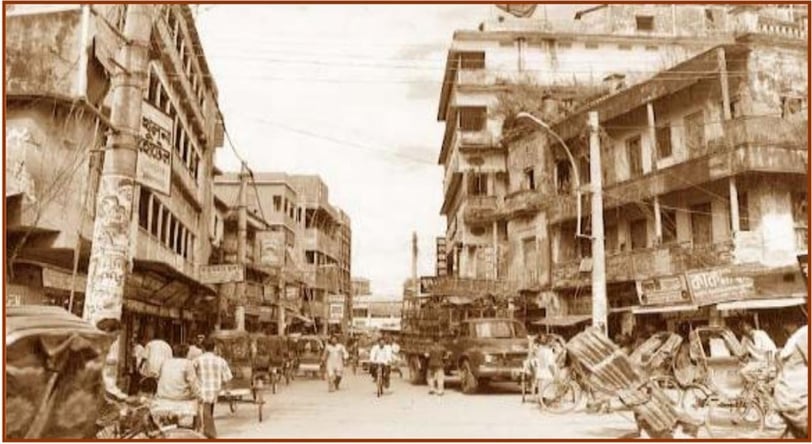

Image: Helatala Road, Khulna Barobazar in 2001
'Place Making' is a notion that explains (to a location) the feeling of being part of an area and is generated by life events and intangible emotions encountered in that specific place. This is not just a geographical or spatial term; it is an existential area full of significance, emotions, and meaning for its inhabitants.
1.Socio-Cultural History of Barobazar
Barobazar's socio-cultural chronology evolved following the progression of periods. The stages of development influenced the intangible aspects of the population and labeled them as a society. A large and diversified religious culture also developed. This section will cover the diversity and elements in chronological order.
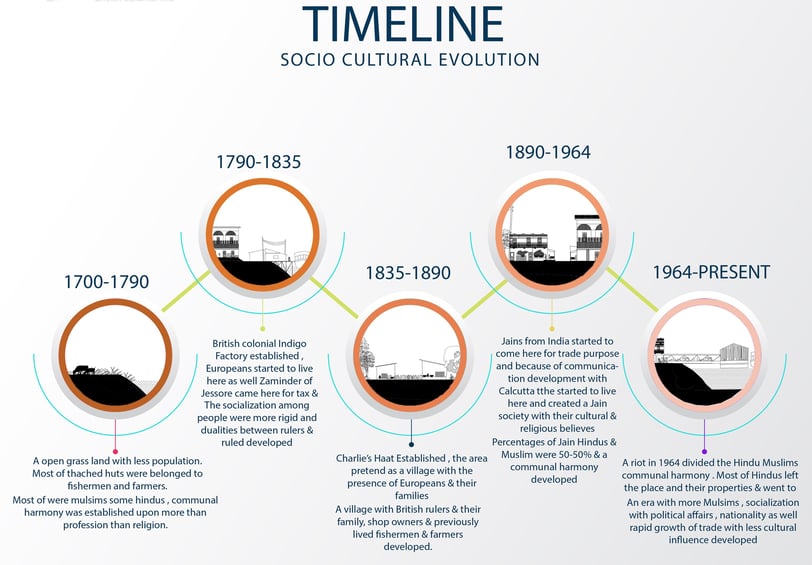

Figure 1: Historical timeline and trend of socio-cultural attributes of Khulna Barobazar
2.Socio-Spatial Dynamics of Barobazar
For Barobazar, socio-spatial dynamics involve incorporating local knowledge. It is a collection of intangible material related to people's life experiences (Nogu, 2010).
According to Escobar (2001), "local knowledge is a mode of place-based consciousness," we believe this local knowledge gives meaning to certain urban places due to cultural and social actions that have occurred in them. These Barobazar location-based social analyses are referred to as socio-spatial dynamics. Which will provide a clear picture of the significance of this municipal site (Barobazar). To uncover this network, it is necessary to recognize that personal lived experiences of a place are required to develop a sense of belonging. In this section, we will brief the spatial diversity of Barobazar according to social context.

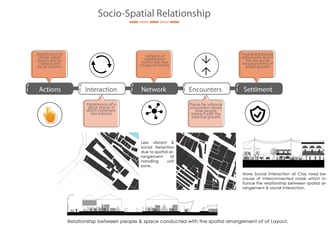
Figure 2: Socio-spatial relationship diagram of Khulna Barobazar
3.Socio-Spatial Issues of Barobazar
Barobazar was built not only for public interests but also to establish successful public spaces for trade and business. It is not a simple matter. Land uses for more profit and occasionally for private interest tend to take over urban waterfronts- new homes and condos, hotels, office buildings, and restaurants line up along the promenade has also produced various concerns on social or, more plainly, intangible matters. Doucet has identified urban waterfronts such as Barobazar as the most popular locations for flagship projects - the new development of gentrification. However, the complexity of various issues generated social complications among the residents. This topic will go over socio-spatial issues.
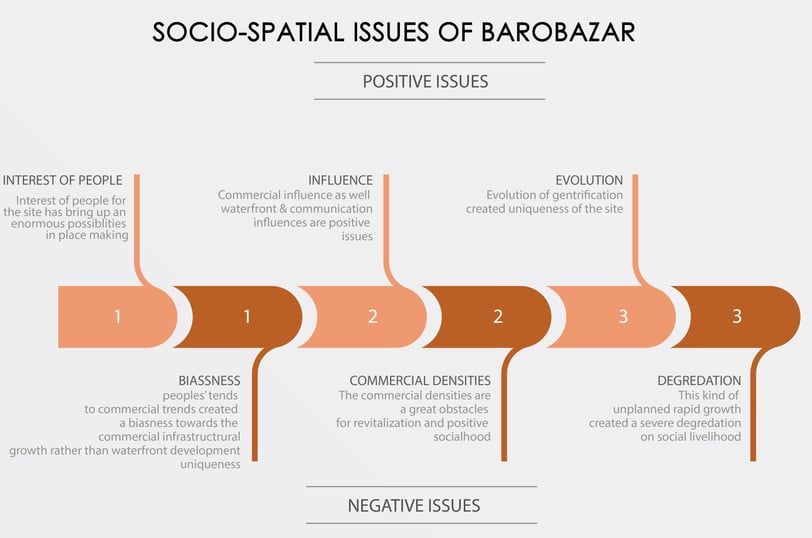

4.Social Activities
Borobazar's social activities grew because of some metaphorical implications. The non-physical characteristics of urban waterfronts produce a variety of social life and human activities, which result in formal and informal activities. Place-based consciousness also aided in the establishment of official and informal activities. The scenario is founded on the emotions and prejudices of residents.
There are two kinds of Social Activities seen in an urban site:
1. Formal Activities
2. Informal Activities
Formal Activities
Formal activities define the structured activities of an urban site. This activity process is formally expressed and developed in an eligible way, along with the expressed goal and interactions.
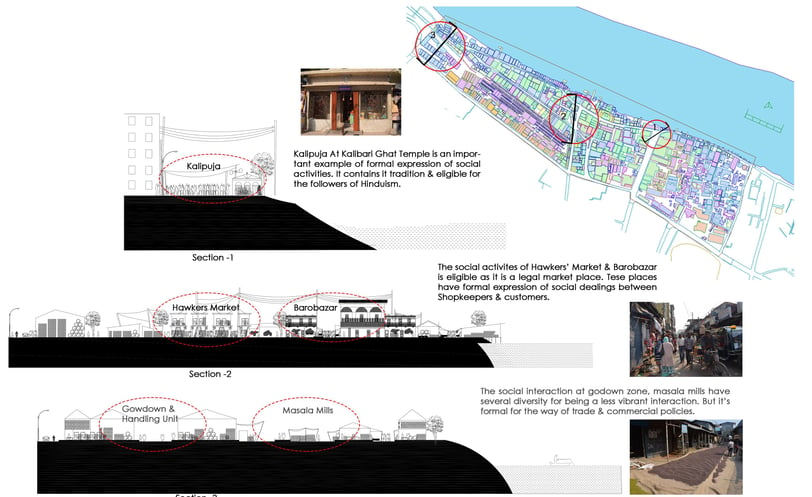

Figure 4: Formal activities of Khulna Barobazar
Informal Activities
Informal activities refers to the social activities which are illegal or not eligible for society or not structured (in example , residential activities).
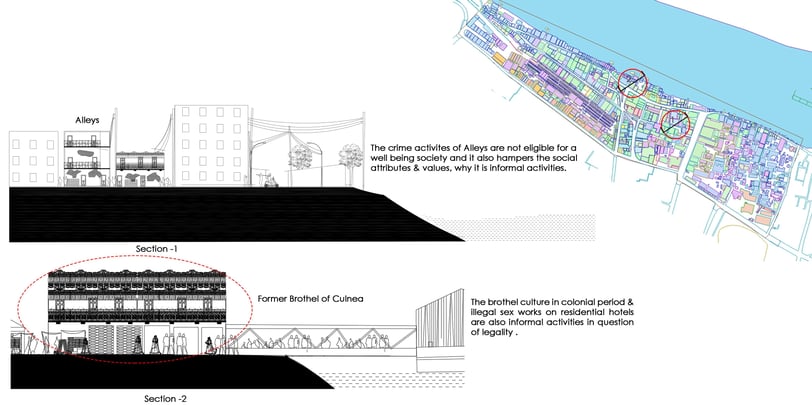

5. Socio-Spatial Matrix for Barobazar
As previously stated, Barobazar and Rupsha Belt represent a complicated mix of actors' interests. Over the previous two decades, a younger interest group has emerged that has compelled the transformation of this entire sale market into a high-end Commercial Avenue. They focus their efforts on the highest levels of government, but the local community relies on a local public figure and a year-old social network.
There was a disproportion based on socio-spatial difficulties, and a matrix of social benefits was constructed.
Social Space for Local Gathering
Space, according to Lefebvre, cannot be abstracted. The term "social space" refers to the lived space in which individuals engage in their daily spatial practices. Historically, Barobazar was a commercial center for Khulna. Aside from that, it has a distinct identity. It is also a social gathering spot for Barobazar residents. Several ghats here serve only as a means of connecting to the river. Because there was no public plaza or Embankment, the ghats became the primary gathering place for the people. The ghats are a purposeful recreational place set aside for city dwellers; they use it as a breathing space.
Many tea stalls and "Bhaja Porar Dokan" (snack stalls) are along these ghats (locally called). These stalls are generally open 24 hours a day, seven days a week, because their significant target audience is the working class. However, they come alive in the evenings when many city dwellers visit the Barobazar to buy things or simply relax.
There is acute mixed-use development where the ground floor is used for public functions like grocery shops, Vater Hotel, Kaccha Bazar, and fruits market, and the upper floor is used for private uses. Among this scattered development, one finds him/herself very difficult to adjust to this cozy environment unless he/ she is from the local group. Lack of lighting and air ventilation makes social spaces unhygienic and sometimes unsafe for outsiders. In the context of the encroachment problem, these social spaces need to be more exposed to rivers and the public simultaneously.
6.Demography & Social Structure
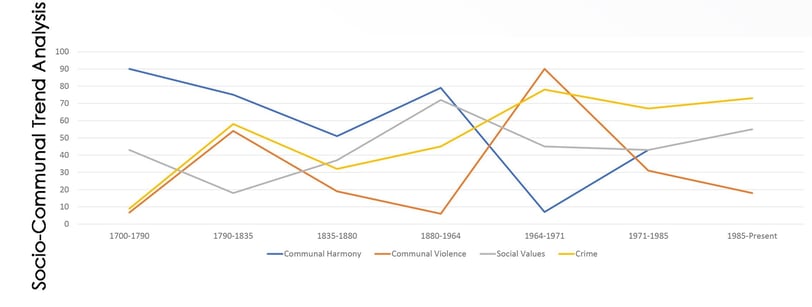

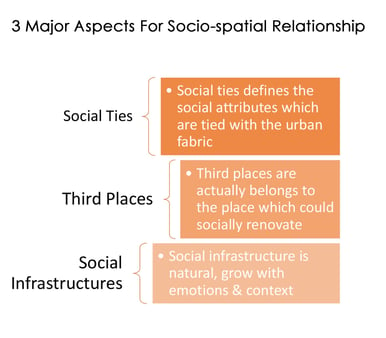

Figure 3: Socio-spatial issues of Khulna Barobazar
Figure 4: Informal activities of Khulna Barobazar


7.Cultural Spatial Dynamics & Morphology
The architecture of the historic buildings that once served within this tissue may have deteriorated. Still, the heritage of BaroBazaar has been preserved to continue evolving while negotiating the aspirations, needs, and reasoning of ordinary subjects, as well as through their appropriation and modulation of space. This viewpoint has truly shaped Barobazar's culture. If we look at the morphological growth, we can easily observe that ordinary people's aspirations, desires, reasoning, and appropriation and manipulation of space are the key issues for cultural spatial dynamics.
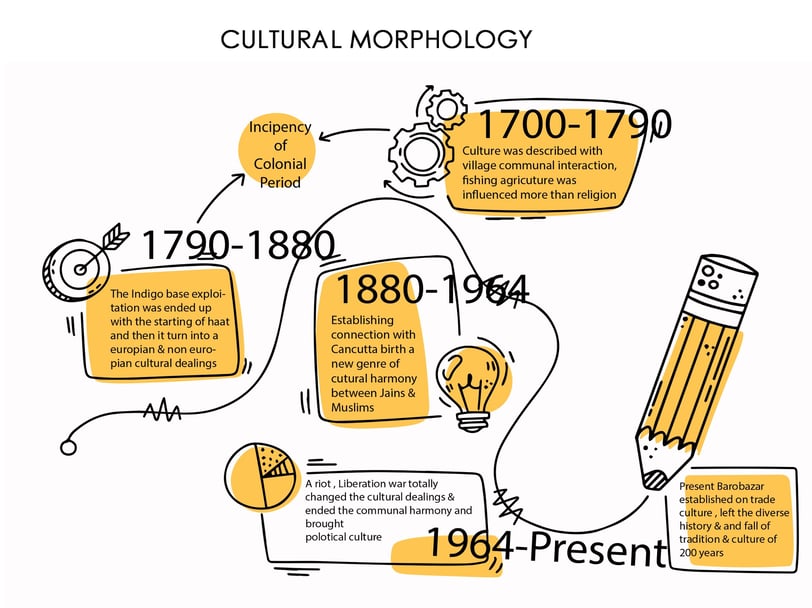

Figure 5: Cultural morphology of Khulna Barobazar
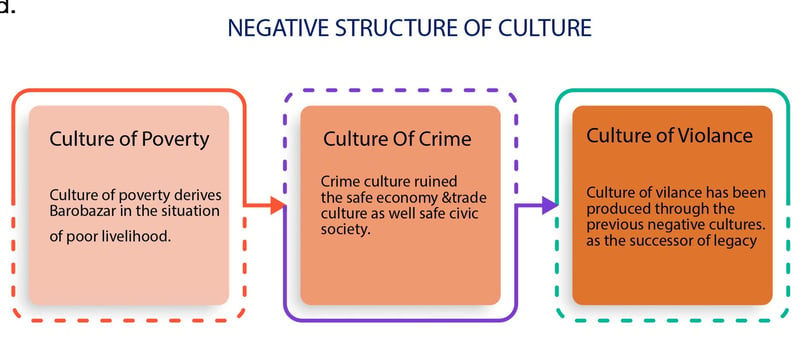

Figure 6: Cultural negativity of Khulna Barobazar
8.Religion Morphology & Dynamics
The religious development of the Barobazar and Kalibari Ghat zones has a long history. It has been changed aimlessly on the basis of economic progress since the early colonial times. This trend analysis depicts Barobazar's religion morphology and dynamics.
Jains' Influence on Social and Cultural Attributes
Following the establishment of a rail connection with Calcutta, numerous Jains came to 'Calnea' for trading purposes. The influence of Narail's Jaminder, on the other hand, inspired Hinduism there. They had a culture of Laxmi Puja, but at the beginning of the twentieth century, they started Kali Puja, which is why they built the Kali Mandir. Nearby was also another Jain Temple and a Jain estate erected there.
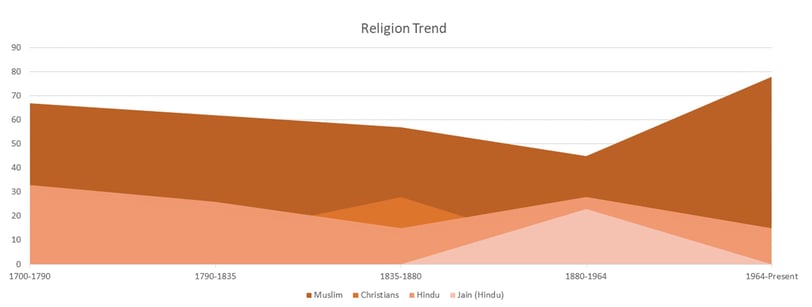

Figure 7: Religion trend of Khulna Barobazar
9.SWOT Analysis Regarding Socio-Cultural Aspects
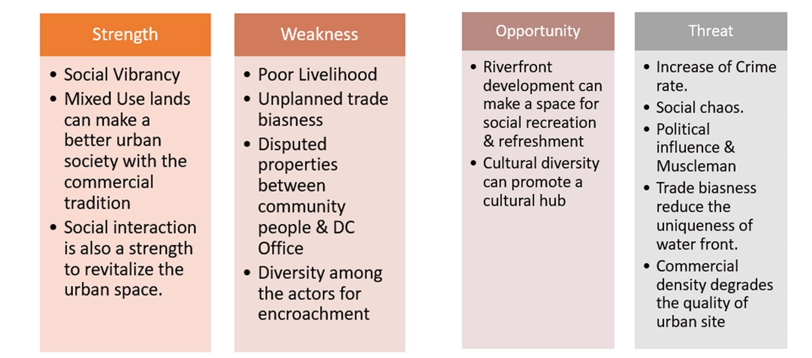

Acknowledgements: Syeda Nurun Nahar Zahra, Sarder Shafiqul Islam, Nahin Uddin Mollick
Meet The AuthorS


Muhammad Golam Sami
B. Arch, Khulna University of Engineering & Technology, Khulna, Bangladesh Architect | Futurist | Sustainable Design Expert
Operational Head, ADORA Studios, Bangladesh
Founder, samism.org
Lecturer, Department of Architecture
Northern University of Business & Technology


Mahmuda Yasmin Dola
B. Arch, Khulna University of Engineering & Technology, Khulna, Bangladesh Architect | Analytical Practitioner
Head of Construction, ADORA Studios, Bangladesh
CMO & Head of Construction, SS Construction & Power Solution, Bangladesh
Related ARTICLES
Related PROJECTS
Regeneration of urban public realm: At the Commercial Waterfront of Barobazar, Khulna
This project design supports how the commercial waterfront of the Baro Bazar can be developed as an urban space, which will be used for human service and human welfare. At the same time, one of the objectives of this project is to retrofit the entire riverfront with its surroundings. One of the targets of this project is to restore the declining economic progress and the lost importance of the ghats. The entire project has been completed in the renovation and regeneration process.
Image: Waterfront Regeneration at Barobazar Delta Ghat
Location: KUET, Khulna; Year: 2020




